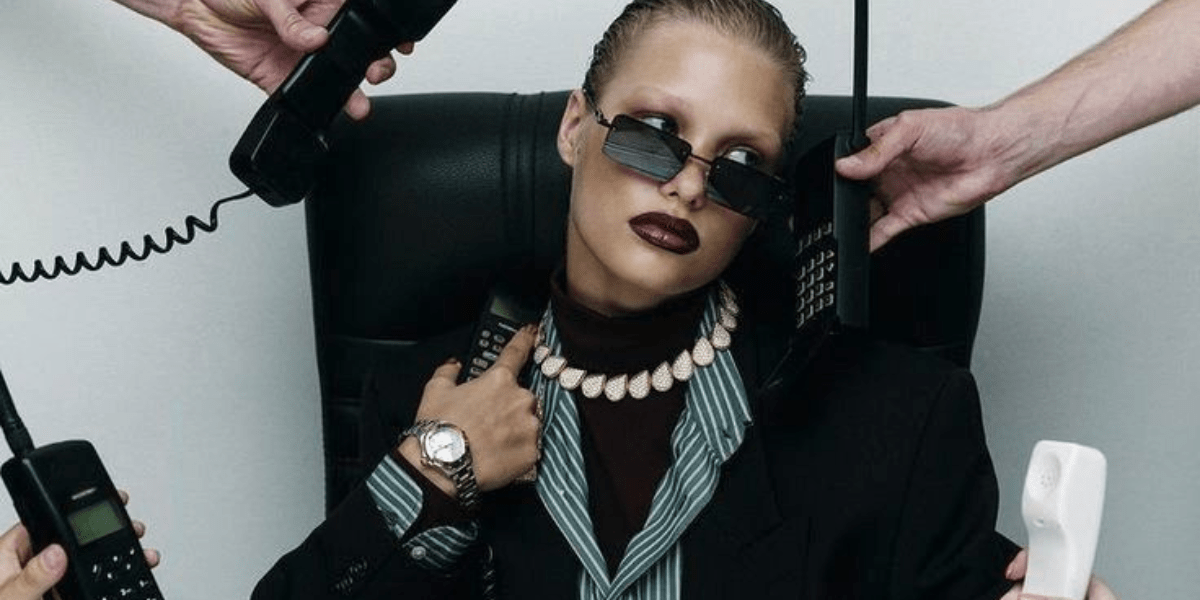Swiss watchmaker Swatch is the latest global brand to be swept up in a wave of controversy this week. An ad showing a model pulling the corners of his eyes – condemned as echoing the racist ‘slanted eye’ gesture used to mock Asians – ignited uproar on social media, sparking media fuelled boycott calls in one of Swatch’s most critical markets – China.
The brand moved quickly to apologise and pull the campaign worldwide, but critics dismissed the response as profit-driven, and consumer anger shows little sign of fading.
The most reported response from the company was: ‘We sincerely apologize for any distress or misunderstanding this may have caused’ – the use of ‘may’ seems a little opaque here. Pretty clearly ‘did’ cause some distress… never mind misunderstanding.
@itvnews Swatch apologises for 'racist' advert #news #itvnews ♬ original sound - itvnews
As we all now know, American Eagle faced its own crisis this summer when a campaign starring Sydney Sweeney was accused of pushing eugenics and anti-body-positivity imagery. The backlash spread across social platforms overnight, since then, the brand has reportedly been working with a crisis PR firm.
Closer to home, crisis patterns have followed similar themes over the past year or so with one notable and significant exception. The Marks & Spencer fallout from the cyberattack that paralysed online orders and in-store payments for months, hammering both customer trust and share price, is in many ways, still ongoing.
Three very different stories, but each proving that crisis arrives quickly and that no brand is immune. It could be a misstep of your own, a creative campaign gone wrong or be largely out of your control, like a cyber breach. In any case, a reputational hit can land overnight and, with social media, spiral globally before a brand even has time to draft a statement.
Brandnation’s Global Head of Brand and Strategy Jeremy Page says, “Global corporate communications has entered a new era, and as we head towards 2026, it’s time to take a look at your crisis comms and take steps to update your tone. Something that factors in creativity of approach as well as a quality response – something a little corporate not corporate.”
What is crisis PR and how is it evolving?
At its simplest, crisis PR is the practice of protecting and managing a brand’s reputation when it faces sudden risk or public backlash.
A decade ago, a crisis might have meant a product recall or a nasty headline. Today, it could be a deepfake of your CFO circulating on TikTok, a rogue AI-generated ‘leak’ destabilising investor confidence, or maybe even a kiss-cam clip of your CEO and Head of People at a Coldplay concert going viral worldwide.

Image: Andy Byron had been CEO of Astronomer for two years when he and Kristin Cabot were caught on the big screen at a Coldplay show. Both have since resigned.
“When you stop and look around, you realise crisis PR is constantly at play. Controversy makes the headlines, so crisis PR agencies like us are working on the stuff we’re always hearing about it,” adds Jeremy. “The craft lies in what happens behind the scenes, the unseen work that shifts the focus and helps brands steady the narrative.”
The new crisis PR landscape in 2026
Looking ahead to 2026, crisis PR will be defined by an intensification of pressures already reshaping the landscape, the relentless churn of social media algorithms, the growth of large language models (LLMs), the rapid advance of artificial intelligence and the very real threat of cyberattacks.
Attention will remain the most valuable but volatile currency. In the creator economy, brands are already battling for fleeting seconds of consumer focus, and that competition will intensify.
“The battle for attention will continue to force brands to take bigger creative swings,” Jeremy explains. “That’s exciting, but a single campaign can be both a breakthrough and a breakdown, depending on how audiences choose to interpret it. That’s why, as an agency, it’s so vital to conduct thorough message testing for clients.”
Social media will remain the ultimate accelerant. A stray TikTok comment, a Reddit post or a Twitter thread can escalate to global news in hours.
Generative AI will add another layer of volatility. Its adoption is accelerating, and by 2026 it will be a primary way consumers discover and validate information. Because these tools pull content from established editorial sources as well as forums, blogs and social media platforms like Reddit and X, negative press or cultural backlash will surface faster, spread further and prove harder to contain.
“Reputation monitoring will need to cover every corner of the digital landscape,” adds Jeremy.
At the same time, AI-fuelled misinformation will grow as a threat. Deepfake leaders, falsified leaks and fabricated reports will also become more damaging, with the potential to erode consumer trust and destabilise markets.
Cyberattacks, too, will remain a defining challenge. What were once technical IT issues are now full-blown reputational crises capable of denting revenue, shareholder confidence and long-term public trust. The recent surge in attacks has already impacted retailers including Pandora, M&S, Co-op, Harrods, Chanel and Adidas, underscoring how transparency and accountability are no longer optional, but expected.
The cyberattack surge also shows no signs of slowing. Once considered technical issues, they have evolved into reputational crises that can damage revenue, shareholder confidence and public trust long-term.
7 top tips for effective crisis PR in 2026
To navigate this landscape, here are our seven top tips for effective crisis PR in 2026:
1. Anticipate the unexpected
Crises can now emerge from AI-generated leaks, deepfakes or viral content on social. Brands should map out emerging risks, run scenario planning and be ready to act before issues escalate.
2. Act fast, with clarity
In an era where narratives can spread globally within minutes, speed is critical. Transparent, consistent messaging issued early can prevent misinformation from taking root.
3. Listen everywhere
Monitoring goes beyond Twitter or TikTok. Forums, emerging platforms and AI-driven sentiment analysis will be essential to flag potential issues before they spiral.
4. Prioritise authenticity over polish
Modern audiences distrust corporate-speak. Empathy, honesty, and accountability will resonate far more than perfectly rehearsed statements. And if they are rehearsed, make it feel genuine.
5. Test and learn continuously
Every creative idea or campaign carries risk. Simulate responses, analyse audience reactions and iterate messaging to reduce misfires in the attention economy.
6. Mobilise trusted voices
Employees, partners and credible influencers can help shape narratives quickly. In 2026, authentic voices will be more powerful than ever in controlling reputational fallout.
7. Integrate crisis and brand strategy
Crises rarely occur in isolation. Align PR with marketing, ESG, and corporate communications strategies to maintain trust and coherence across every touchpoint.
We help brands navigate this new era of corporate communications with our ‘corporate, not corporate’ proposition. From reputation management and issues advisory to leadership communications and media training, find out how we can help you prepare for 2026.

About the author
Natalie Clement
With international experience as a digital marketer, writer, and editor, Natalie has worked across sectors including lifestyle, technology, and tourism.





